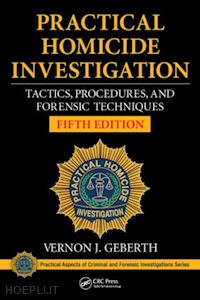Renowned for being THE definitive resource for homicide investigators, Practical Homicide Investigation: Tactics, Procedures, and Forensic Techniques details the recognized protocols used by investigative divisions of major police departments throughout the world. The text is used in most police academies, including the FBI Academy in Quantico, Virginia.Now in its fifth edition, the book begins with a comprehensive discussion of homicide crime scenes and moves chronologically from initial police notification, the correct police response that follows, and the subsequent steps necessary to conduct an intelligent investigation. It then delves into the more technical aspects of homicide investigation, augmented with numerous pictures and full-color illustrations that involve pertinent case histories.This latest edition includes three new chapters along with fully revised chapters with new case histories and techniques that reflect the latest forensic methods and modern investigative procedures.Highlights of the Fifth Edition Include: Newly revised "Homicide Investigator’s Checklist" A new chapter on the latest DNA technology A rewritten chapter on equivocal death investigations that includes staged crime scenes Additional information on modes of death Fully updated chapters on death notifications, sex-related homicide, management for police administrators, suicide investigation, and narcotics-related and homosexually based homicides Over 920 photos and illustrations, 250 new photographs, and several new case histories Eminent author, lecturer, consultant, and expert witness Vernon J. Geberth incorporates his more than four and a half decades of real-world law enforcement experience in this quintessential reference. This classic and must-have resource provides the most vital information needed by detectives and police investigators responsible for cases in violent and sudden death. Remember: do it right the first time. You only get one chance.—Vernon J. Geberth, M.S., M.P.S., Homicide and Forensic Consultant, Author of Practical Homicide Investigation, and Series Editor of The Practical Aspects of Criminal and Forensic Investigations











